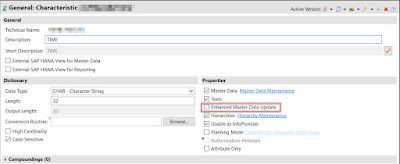Data
warehousing is a category of enterprise software that integrates a data from
different sources, transform it into a consistent and structured format, and
provide users with easy access to the information needed for decision-making
purposes.
As
of Q2 2023 SAP has three data warehouse
solutions depending on its deployment scenarios:
A) on-prem & private cloud:
1.
SAP
HANA SQL DWH (Data WareHousing) – brings SAP HANA platform with loosely
coupled tools and its platform services (HANA application, integration,
processing and database services), best of breed to build own data models
2.
SAP
BW/4HANA – packaged data warehousing solution, successor of SAP BW, all DWH
services in one integrated repository (modeling, monitoring and managing the
DWH)
B) public cloud:
3.
SAP
Datasphere (formerly SAP DataWarehouse Cloud) – cloud based data warehousing
service
Into
the A) section there would be a place for classic SAP Business Warehouse (SAP BW)
up to its latest version 7.5 as well. However, the SAP BW is based on SAP
NetWeaver stack that reaches its end
of maintenance status. Due to this the latest version of SAP BW –
7.5 has a planned expiration of mainstream maintenance as of Dec 31st
of 2027.
Other
perspective can be either from application or native (SQL type) of the Data
warehouse. SAP Datasphere and SAP BW/4HANA is application driven solution whereas
SAP HANA SQL DWH is native driven type of DWH solution.
Each
solution caters to different needs and deployment scenarios, enabling customers
to effectively manage and leverage their data assets for improved
decision-making and business outcomes.
More
information:

